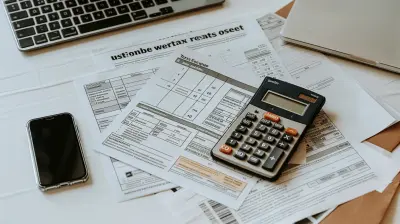27 January 2025
When it comes to building wealth, the words “compound interest” and “capital gains” get thrown around a lot. But what do they really mean? And more importantly, how can they work in your favor to grow your money over time? Whether you’re new to investing or just looking to sharpen your financial game, this guide breaks it all down in plain, no-fluff terms. Let’s dive in and uncover the power of these two wealth-building forces—compound interest and capital gains.
What Is Compound Interest, and Why Should You Care?
Let’s start with compound interest. At first glance, it might sound like just another dry financial term, but trust me—it has the power to transform your money. Think of compound interest as interest on interest. It’s when the interest you’ve earned on your investment starts earning interest itself. Basically, your money works overtime for you, like a snowball rolling down a hill and picking up more snow as it goes.Still not clicking? Here’s a simple analogy: Imagine planting a seed. That seed grows into a tree, and over time that tree produces fruit. Now, instead of just eating the fruit, you plant some of the seeds from the fruit. Those seeds grow into more trees, which then produce even more fruit. That’s compound interest in action.
The Formula Behind the Magic
Okay, don’t worry—I won’t bore you with complicated math. But here’s a quick look at the formula for compound interest:A = P (1 + r/n) ^ (n * t)
What does this mean?
- A: The amount of money you’ll have after a certain period of time (including interest).
- P: Your starting investment (or principal).
- r: The annual interest rate (expressed as a decimal).
- n: The number of times interest is compounded per year.
- t: The number of years your money is invested.
If your eyes just glossed over, don’t worry—the takeaway is this: The longer you hold onto your investment and let it compound, the more exponential your growth becomes.
The Time Factor: Start Early, Reap Big
Want to know the secret sauce to maximizing compound interest? Start early. Even if you don’t have a ton of money to invest right now, time is your best friend. Why? Because compound interest grows exponentially—it needs time to really take off.Here’s a quick example:
- Investor A starts investing $100 a month at age 25 and stops at age 35 (10 years).
- Investor B starts at age 35 and invests $100 monthly until age 65 (30 years).
Guess what? By age 65, Investor A, who only invested for 10 years, will often have more money than Investor B, all thanks to the early effects of compounding. Crazy, right?
What Are Capital Gains?
Now, let’s talk about capital gains. If compound interest is like a snowball, capital gains are like hitting a jackpot (but in a strategic, less risky way). In simple terms, capital gains are the profits you make when you sell an investment for more than you paid for it.For example, let’s say you bought shares of a company for $50 each, and a few years later, the value of those shares increased to $100. If you sell those shares, the $50 difference is your capital gain. Boom—profit.
Short-Term vs. Long-Term Capital Gains
Not all capital gains are created equal. They’re categorized into two types:- Short-term capital gains: Gains on investments you’ve held for less than a year. These are typically taxed at your regular income tax rate.
- Long-term capital gains: Gains on investments you’ve held for more than a year. These are taxed at a lower rate, making them much more tax-friendly.
The takeaway here? Be patient. Holding onto your investments for the long term not only gives them time to grow but can also save you money when it’s time to cash out.
How Compound Interest and Capital Gains Work Together
Here’s the exciting part: Compound interest and capital gains aren’t mutually exclusive. In fact, they often work best when combined.Imagine you’re investing in a growth stock that pays dividends (a portion of a company’s profits distributed to shareholders). You reinvest those dividends back into the stock, which increases your shares. Over time, the value of the stock grows (capital gains), and the dividends compound on your reinvested shares. It’s like a financial double-whammy—a growth stock on steroids.
The Role of Time in Investing for Growth
Here’s the straight truth: There’s no such thing as a “get rich quick” investment. The real magic happens over time. The power of compound interest and capital gains doesn’t fully reveal itself in a year or two. It’s a long-term game, and patience is the key.Think of investing like planting a garden. If you dig up the seeds after a few days, you’ll see no results. But if you water them consistently and give them sunlight over time, you’ll end up with a lush garden bursting with life. The same goes for your investments.
Tips to Maximize Compound Interest and Capital Gains
Now that you understand how these concepts work, let’s look at how to make the most of them.1. Start Early, Even If It’s Small
Don’t wait until you “have enough money to invest.” Spoiler: You’ll never feel like you have enough. Start now, even if it’s just $50 a month. Trust me, your future self will thank you.2. Be Consistent
Invest regularly, no matter what the market is doing. This is called dollar-cost averaging, and it helps smooth out the bumps of market volatility. Remember, it’s not about timing the market—it’s about time in the market.3. Reinvest Earnings
Got dividends or interest? Reinvest them! By putting your earnings back into your investments, you’re supercharging the compounding effect.4. Focus on Growth Investments
Look for opportunities that align with your risk tolerance and growth goals. Stocks, index funds, ETFs, or even real estate can be great options for accumulating wealth over the long haul.5. Play the Long Game
Patience is everything. The less you tinker with your investments, the better off you’ll be. Avoid impulsive decisions based on short-term market swings.6. Learn About Tax Strategies
No one likes taxes, but they’re a part of life. Educate yourself on how to minimize taxes on capital gains and maximize tax-advantaged accounts like IRAs or 401(k)s.The Bottom Line: Let Your Money Do the Work
At the end of the day, investing is all about making your money work for you, not the other way around. Compound interest and capital gains are two of the most powerful tools at your disposal for building wealth over time. By understanding how they work and sticking to a solid plan, you’ll be well on your way to financial growth and freedom.Remember, the sooner you start, the more time your money has to grow. It’s not about being perfect—it’s about being consistent and giving your investments the time they need to flourish.











Molly Chapman
Great insights! Compound interest really is the secret sauce for wealth growth!
February 9, 2025 at 3:34 AM